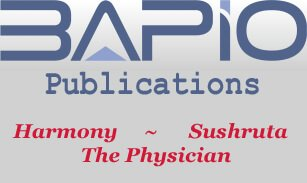FIRMST2020-AB52
DIAPHRAGMATIC MOVEMENT AND ITS INTERACTION WITH POSTOPERATIVE PULMONARY COMPLICATIONS
FIRMST2020-AB52
DIAPHRAGMATIC MOVEMENT AND ITS INTERACTION WITH POSTOPERATIVE PULMONARY COMPLICATIONS
Prasanna Vani VANAMAIL, Kalpana, BALAKRISHNAN
Cancer Institute (W.I.A.), Adyar, Chennai, India
Aim:
To assess the peri-operative changes in amplitude of diaphragmatic movement by ultrasound with reference to Post-operative pulmonary complications.
Keywords: Postoperative pulmonary complications, diaphragm, ultrasound, postoperative pneumonia
correspondence prasna.vani@gmail.comconflict of interest none
Article InformationDOI:
10.38192/1.6.3.firmst20.ab52Epub: 21.09.2020Presented at FIRMST Conference, Moscow 2020Peer reviewed by JS Bamrah, Ananthakrishnan Raghuraman, Soumit DasguptaOpen Access- Creative Commons Licence CC-BY-ND-4.0
Postoperative pulmonary complications (PPCs) require early recognition to reduce morbidity and mortality. Diaphragmatic dysfunction is associated with upper abdominal surgery and predisposes patients to PPCs. We aim to assess the peri-operative changes in amplitude of diaphragmatic movement by ultrasound with reference to PPCs. We compared the difference in diaphragmatic inspiratory amplitude between PPC and No-PPC group and evaluated the trend in serial diaphragmatic inspiratory amplitude measurements within each group.
Methods:
We conducted a prospective, observational study in patients between the ages 18 to 75 years undergoing elective, open, upper abdominal oncological surgeries under combined general and epidural anaesthesia. We performed ultrasonographic evaluation of the diaphragm by measuring the diaphragmatic inspiratory amplitude in the right and left hemi-diaphragms during quiet and deep breathing both preoperatively and on postoperative days 1, 2 and 3. PPCs were diagnosed and graded based on standard criteria by an independent investigator who was blinded to the ultrasound measurements. Patients were followed-up for PPCs until day 7.
Results:
One hundred and sixty-two patients were included in the final analysis, which included 33 patients in the PPC group and 129 in the No-PPC group. The preoperative diaphragmatic inspiratory amplitude was significantly less in the PPC group when compared to the No PPC group (P<0.001), while there was no significant difference in the postoperative measurements, except in the left hemi-diaphragm during deep breathing, which exhibited a reduced diaphragmatic inspiratory amplitude on postoperative day 1 in the PPC group. In the No-PPC group, diaphragmatic inspiratory amplitude on post-operative day 3 was significantly higher than on day 1 in the right hemi-diaphragm during quiet breathing. Post-operative day 3 diaphragmatic inspiratory amplitude was higher than on postoperative day 2 also in the left hemi-diaphragm during deep breathing in the No-PPC group. No improvement in diaphragmatic inspiratory amplitude on day 3 was observed in the PPC group.
Conclusions:
Decreased preoperative diaphragmatic inspiratory amplitude and its impaired recovery after surgery was observed in patients with PPCs. Perioperative assessments of diaphragmatic movements by point of care ultrasound helps identify patients at risk of a PPC following upper abdominal oncological surgeries.
If you are interested in publishing your conference abstracts with us
If you are interested in publishing your conference abstracts with us
Please contac the editorial board for peer review and publication in the The Physician Journal of International Health



